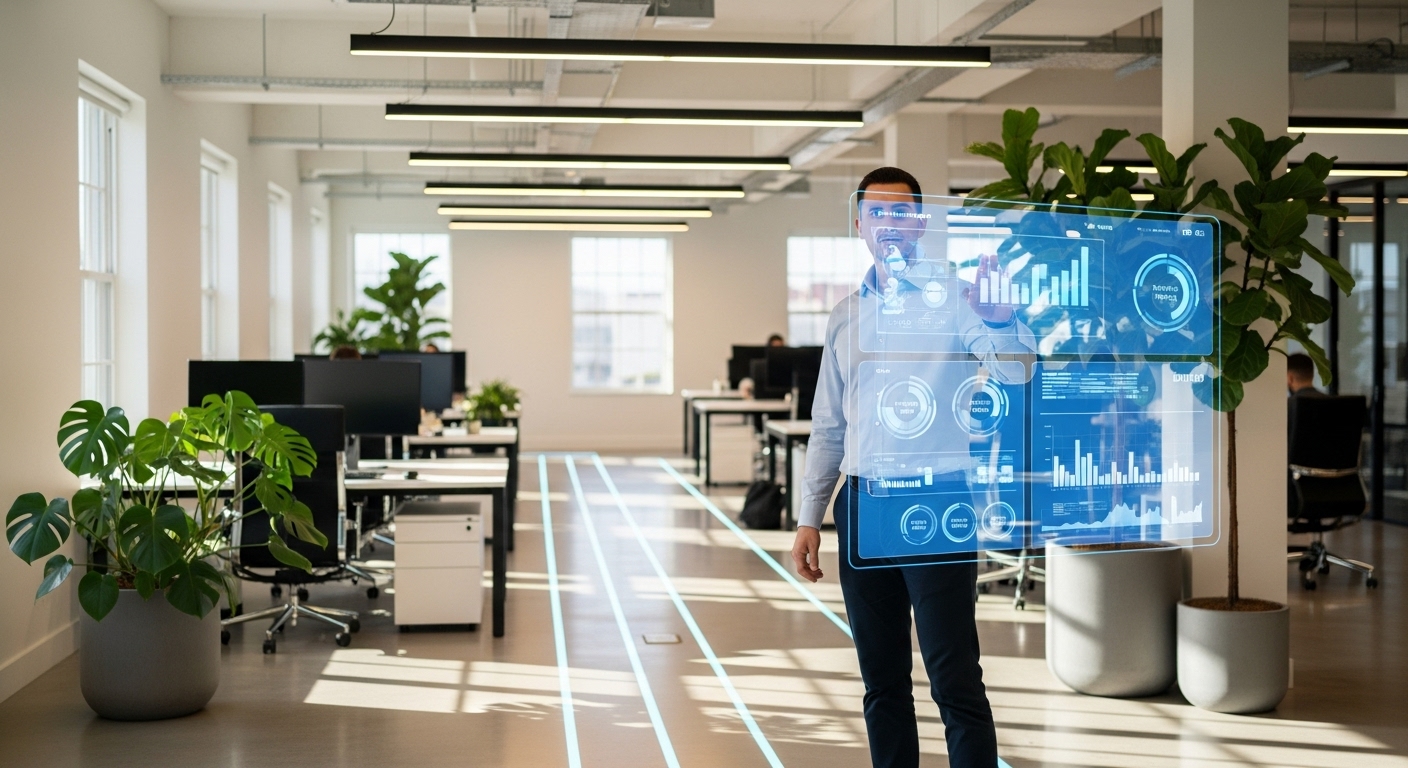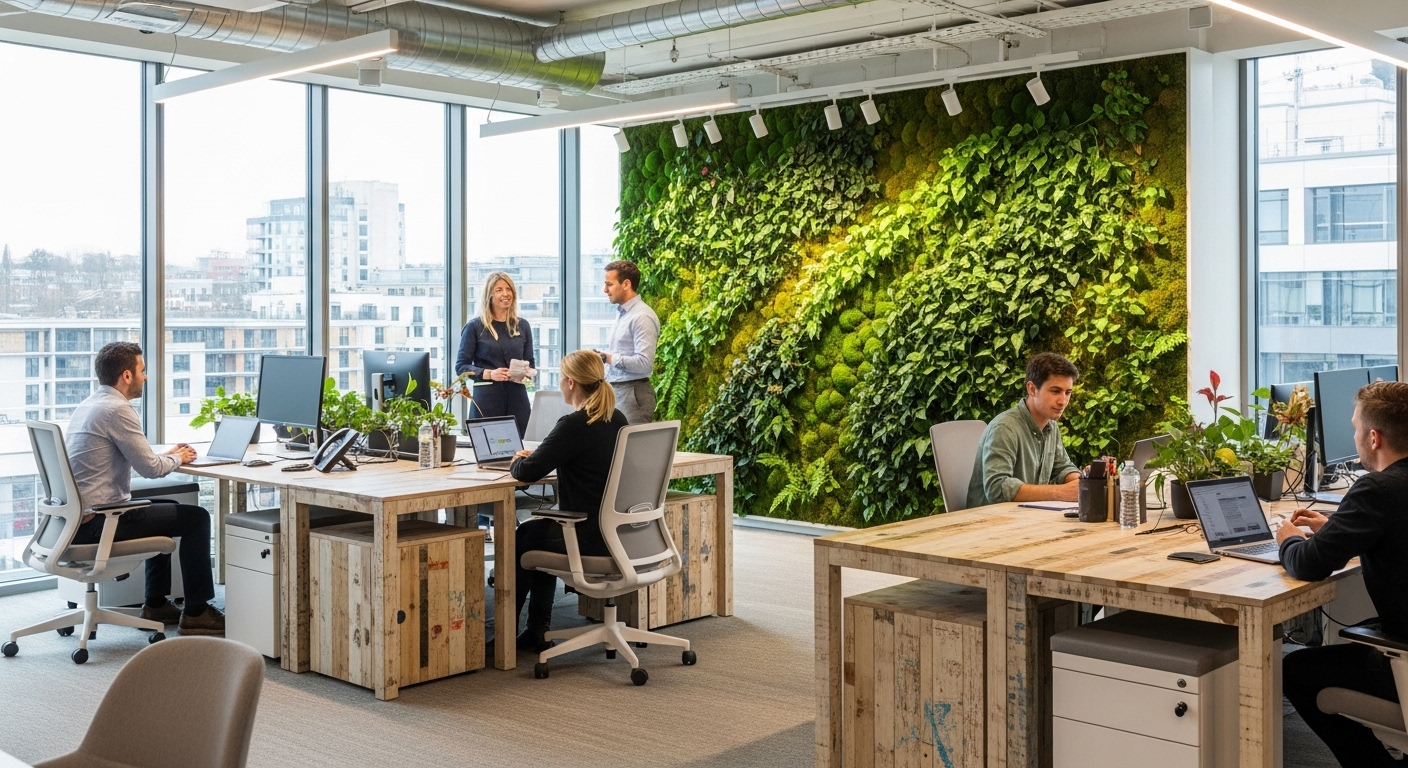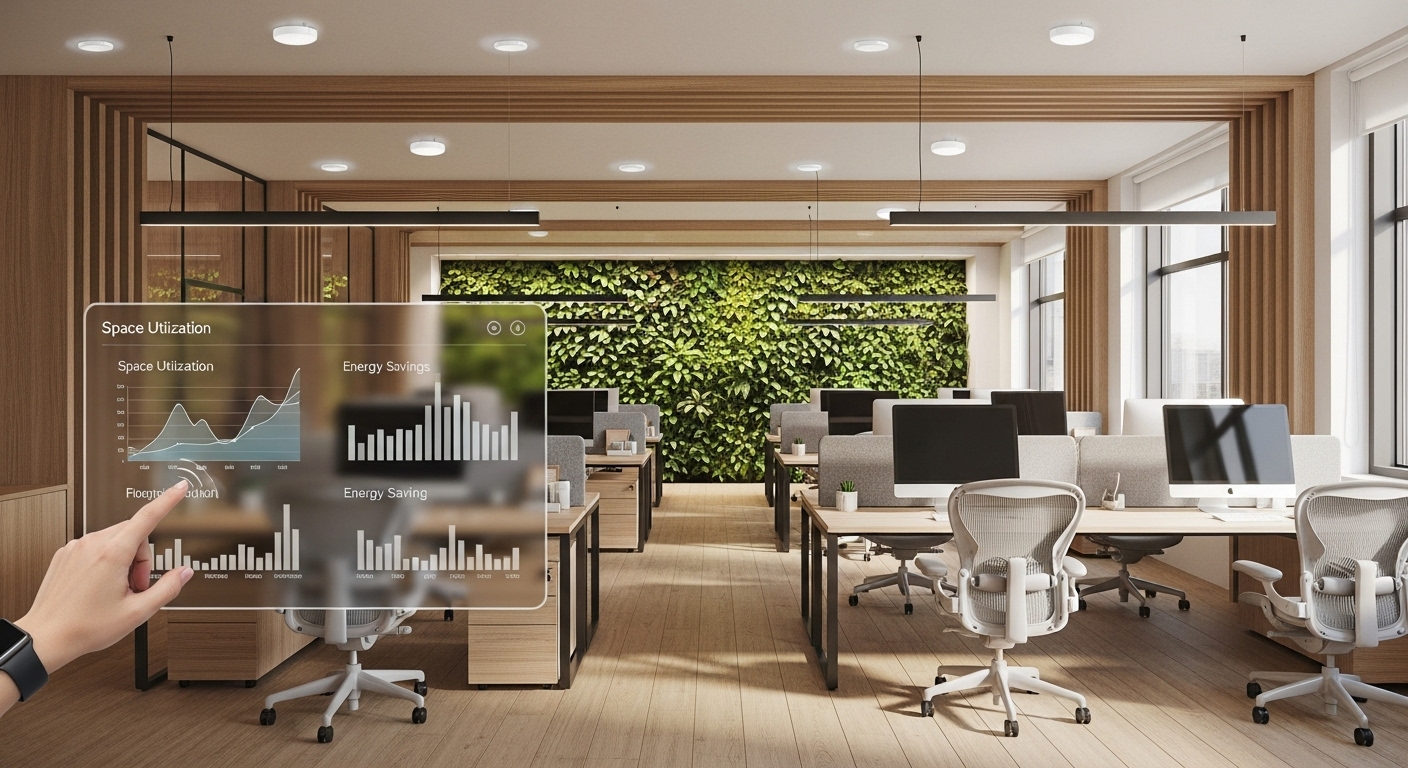Imagine walking into your office and the environment adjusts to you before you even reach your desk. The lights brighten to your preferred level, the temperature shifts to your preset comfort zone, and an available workstation is highlighted on your phone. This isn’t a scene from a sci-fi movie; it’s the reality of the ambient office, the next evolution in smart workplace technology. While early smart offices focused on reactive commands and basic automation, the ambient office leverages a sophisticated ecosystem of IoT sensors, AI, and machine learning to create a workspace that is predictive, personalized, and profoundly human-centric. This shift moves beyond mere efficiency gains, aiming to create an environment that actively enhances employee well-being, fosters collaboration, and provides leadership with unprecedented insights into how space is truly used. In a world where the office must be a destination worth the commute, this intelligent, responsive environment is becoming a critical strategic asset for attracting and retaining top talent.
The technological bedrock of the ambient office
The foundation of an ambient office is a network of interconnected technologies that work in concert to gather, analyze, and act on data. At the core are Internet of Things (IoT) sensors, the digital nervous system of the building. These discreet devices monitor everything from room occupancy and desk availability to air quality, ambient light levels, and even noise pollution. Occupancy sensors, for instance, don’t just count people; they provide real-time data on which collaborative spaces are popular and which are underutilized. Environmental sensors continuously measure CO2 levels, humidity, and temperature, allowing the building’s HVAC system to make intelligent, proactive adjustments that boost employee comfort and cognitive performance. This constant stream of data is then fed into an Artificial Intelligence (AI) and Machine Learning (ML) engine. This is where the magic happens. The AI doesn’t just report the data; it learns patterns. It can predict meeting room demand based on historical usage, automatically dim lights in unused areas to conserve energy, and even alert facilities management to potential equipment failures before they occur. Tying this all together is an Integrated Workplace Management System (IWMS). This software platform acts as the command center, providing a unified dashboard where managers can visualize data, manage resources, and oversee the entire smart office ecosystem, transforming raw data points into actionable strategic intelligence.
Beyond efficiency: enhancing the human experience
While the operational efficiencies and cost savings of an ambient office are significant, its most powerful impact is on the employee experience. The goal is to create a frictionless environment where technology removes minor annoyances and empowers individuals to do their best work. This begins with personalization. Through a simple mobile app, employees can find and book available desks or rooms that fit their needs for the day, whether it’s a quiet focus pod or a collaborative project space. Some advanced systems even allow individuals to control the lighting and temperature in their immediate zone, creating a micro-environment tailored to their personal preferences. This level of control reduces frustration and increases comfort. The concept of a frictionless day extends to navigation and access. Touchless entry systems grant access via a smartphone, eliminating the need for keycards. Smart wayfinding helps employees and visitors navigate large or complex office layouts, while automated visitor management systems streamline the check-in process, creating a seamless first impression. Furthermore, the focus on well-being is paramount. By monitoring and optimizing air quality, lighting that mimics natural circadian rhythms, and acoustics, the ambient office directly contributes to employee health, reducing fatigue and improving focus. The technology works quietly in the background, creating a supportive and responsive environment that demonstrates a company’s investment in its people.
Forging a data-driven approach to space management
The ambient office transforms facilities management from a reactive, cost-based function into a strategic, data-driven discipline. The wealth of information generated by IoT sensors provides an objective, real-time understanding of how the workspace is functioning, moving leaders beyond assumptions and anecdotal evidence. Real-time space utilization analytics are perhaps the most valuable output. Dashboards can clearly illustrate peak usage times, identify underutilized zones, and reveal which types of spaces are in highest demand. This intelligence is crucial for hybrid work models, allowing companies to right-size their real estate portfolio and avoid paying for empty square footage. If data consistently shows that small, two-person huddle rooms are always booked while large conference rooms sit empty, future design decisions can be adjusted accordingly. This data-driven approach also extends to operational maintenance. Instead of following a rigid schedule, predictive maintenance uses sensors on HVAC units, lighting systems, and other critical infrastructure to monitor performance and predict potential failures. This allows for repairs to be scheduled proactively, minimizing disruptive downtime and extending the lifespan of expensive equipment. Over the long term, this repository of historical data becomes an invaluable asset for strategic planning, enabling organizations to design future workspaces that are perfectly aligned with the actual behaviors and needs of their workforce, ensuring every dollar spent on real estate delivers maximum value.
Navigating the security and privacy labyrinth
The implementation of a sensor-rich ambient office inevitably raises critical questions about cybersecurity and employee privacy. With thousands of connected IoT devices, the building’s digital attack surface expands dramatically. Each sensor, smart light, and thermostat is a potential entry point for malicious actors if not properly secured. A breach could lead to anything from disruptive pranks, like flickering the lights, to more serious threats like corporate espionage or a shutdown of building systems. Therefore, a security-first mindset is non-negotiable. This involves strategies like network segmentation to isolate IoT devices from critical business systems, end-to-end encryption for all data in transit and at rest, and rigorous device authentication protocols. Equally important is the ethical handling of employee data. The ability to track movement and space utilization can easily stray into invasive surveillance if not managed with transparency and clear governance. Employees need to trust that the data is being used to improve their work environment, not to monitor their every move or measure their productivity. To build this trust, organizations must establish a clear data privacy policy that outlines exactly what data is collected, why it’s collected, and who has access to it. Anonymizing data wherever possible is a crucial best practice. The focus should always be on aggregate trends and patterns, not individual behaviors. Open communication about the purpose and benefits of the technology is key to gaining employee buy-in and ensuring the ambient office is viewed as a supportive tool rather than a digital overseer.
From concept to reality: a phased implementation strategy
Transforming a traditional office into an ambient one is a significant undertaking that requires a strategic, phased approach rather than a complete, overnight overhaul. The most effective method is to begin with a targeted pilot program. Select a specific floor, department, or type of space—such as meeting rooms—to test the technology. This controlled environment allows the organization to measure the tangible benefits, calculate a preliminary ROI, and gather invaluable feedback from a smaller group of employees. This initial phase helps identify potential challenges and fine-tune the system before a full-scale rollout. A crucial factor for success is prioritizing integration. The chosen technology platform should not be a closed silo. It must be able to integrate seamlessly with existing business systems, including IT networks, HR platforms, and calendar/scheduling software. This interoperability is key to creating a truly frictionless experience. For example, integrating the room booking system with Microsoft Outlook or Google Calendar is essential for user adoption. Speaking of which, no amount of sophisticated technology will succeed if employees don’t use it. A comprehensive change management and communication plan is vital. This involves more than just a single training session. It means clearly communicating the ‘why’ behind the changes, highlighting the direct benefits to employees—such as easily finding a quiet space or enjoying better air quality—and providing ongoing support to ensure everyone is comfortable and proficient with the new tools.
The future horizon: what’s next for ambient workspaces?
The concept of the ambient office is not a final destination but a continually evolving frontier. As technology advances, the capabilities of these intelligent environments will become even more sophisticated and integrated into the fabric of our work lives. The rise of Generative AI will play a significant role. Imagine a workplace assistant you can speak to or message, saying, “Find a quiet room for three people for a 45-minute brainstorm this afternoon with video conferencing capabilities,” and the system instantly finds and books the optimal space based on real-time availability and user preferences. Another major advancement is the development of Digital Twins. This involves creating a detailed, real-time virtual model of the physical office. With a digital twin, facility managers can simulate the impact of changes—such as reconfiguring a floor plan or altering HVAC settings—in the virtual world to identify the best solution before investing time and capital in physical modifications. The ultimate trajectory is towards hyper-personalization. In the near future, workspaces may adjust not just to manual presets but to an individual’s biometric data or even their current cognitive state, perhaps increasing fresh air flow during an intense brainstorming session. The ambient office of tomorrow will be a true partner in our work, an invisible force that not only manages the space around us but actively contributes to our productivity, creativity, and overall well-being in ways we are only just beginning to imagine.
In conclusion, the transition from a ‘smart’ office to an ‘ambient’ office represents a fundamental shift in the role of the physical workplace. It’s a move away from static structures and towards dynamic, living ecosystems that respond to their inhabitants in real time. By weaving together IoT, AI, and data analytics, organizations can create environments that offer unparalleled personalization, enhance employee well-being, and drive profound operational efficiencies. This data-driven approach to space management allows for continuous optimization, ensuring that the real estate portfolio is a high-performing asset perfectly aligned with business needs. However, this journey is not without its challenges. Navigating the complex landscape of cybersecurity and ensuring the ethical, transparent use of employee data are paramount to success. For organizations committed to creating a compelling, magnetic workplace destination, the ambient office is no longer a futuristic luxury. It is the new strategic standard, a powerful tool for fostering a culture of innovation and proving that the office can be the very best place to connect, collaborate, and create.





